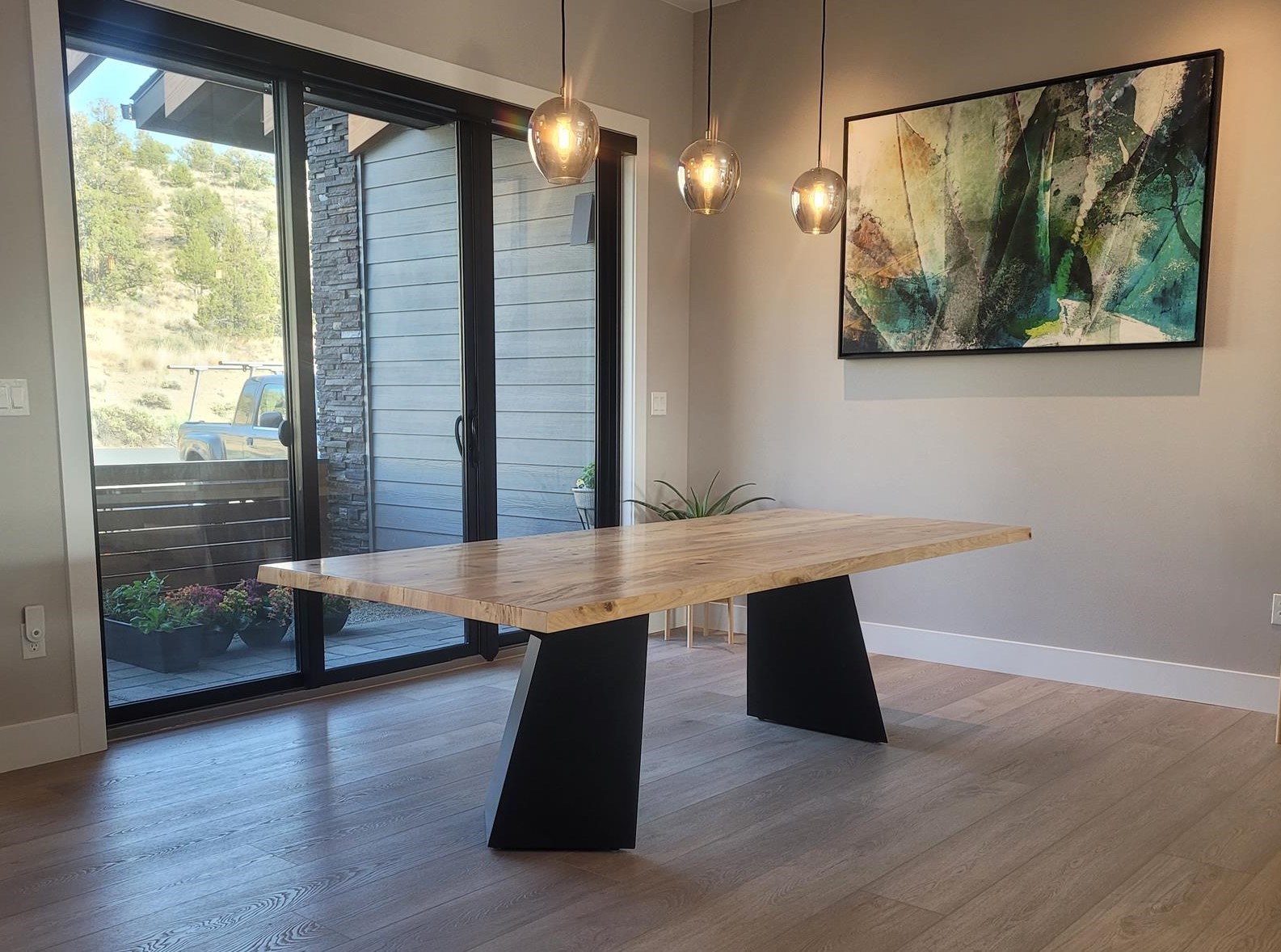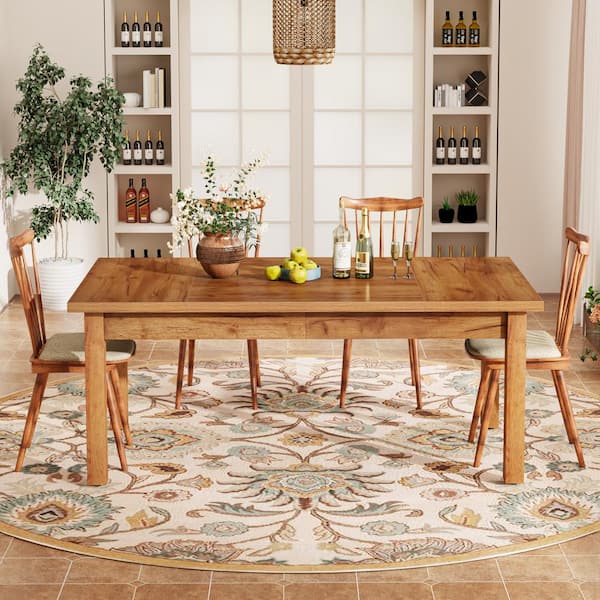Just how to Pick the Perfect Dining Room Table Legs for Your Home Decor
Just how to Pick the Perfect Dining Room Table Legs for Your Home Decor
Blog Article
Selecting the Perfect Dining Table: What Styles Job Best for Your Home?
Selecting the suitable dining table for your home can be a nuanced process that balances appearances and functionality. To navigate these options properly and find a table that really matches your home, take into consideration the following aspects in detail.
Examining Your Room
Reviewing the dimensions and layout of your dining area is a crucial first step in selecting the ideal eating table. Begin by determining the size and size of the area, making up entrances, home windows, and various other building attributes that can affect table positioning. This makes certain that your table not just fits yet additionally enables comfy activity around it.
Take into consideration the variety of individuals you typically captivate. A table ought to fit your home's everyday needs while providing sufficient flexibility for occasional visitors. Generally of thumb, allocate a minimum of 24 inches of table size per individual to make sure a comfortable dining experience.
It's also important to maintain ideal clearance around the table. Preferably, there must be at least 36 inches in between the table side and walls or various other furnishings, allowing easy access and activity. For areas where chairs with arms or added storage devices like buffets are included, enhancing this clearance to 48 inches is advisable.
Lights and environment play significant duties also. Ensure that your eating table aligns with existing lights fixtures or prepare for appropriate lighting remedies. This extensive spatial assessment assurances that your dining table not just fits physically yet also integrates with your room's total performance and visual.
Popular Table Styles

Typical table commonly include elaborate details, curved legs, and abundant timber surfaces, evoking a sense of classic style. They are best for homes with traditional design or those wanting to add a touch of refinement to their eating area.
Modern dining tables focus on simplicity and clean lines, often including products like glass and metal. These tables are ideal for modern areas, providing a streamlined and clean look that enhances minimal design ideologies.
Rustic eating tables, on the other hand, stress natural materials and a handmade appearance - dining room table legs. They usually include reclaimed timber and a distressed coating, creating a warm and welcoming ambience. These tables function well in farmhouse-style homes or those seeking a relaxing, organic feeling
Industrial dining tables incorporate basic materials such as steel and wood, often showcasing a practical aesthetic. This design is well-suited for loft spaces or urban areas, including a touch of tough beauty and toughness to the dining experience.
Each style supplies unique advantages, making it necessary to choose one that lines up with your home's overall style and your individual preferences.
Material Selections
When selecting an eating table, the choice of material plays a critical role in determining both the table's appearances and functionality. Timber, steel, glass, and composite products each deal unique benefits and obstacles, making it crucial to straighten the material with your home's design and way of living needs.
Wood is an ageless and functional alternative, available in ranges such as oak, walnut, and mahogany. Understood for its longevity and warmth, wood matches both standard and modern insides. It calls for normal upkeep to prevent scratches and warping.
Metal tables, typically crafted from stainless steel, light weight aluminum, or functioned iron, are applauded for their contemporary charm and effectiveness. They are specifically matched for commercial or minimal setups however can moved here be susceptible to dents and may feel cold to the touch.
Glass dining tables bring an air of beauty and openness, ideal for smaller rooms as they develop an impression of even more space. While simple to clean, glass can be vulnerable to smudges and requires mindful taking care of to stay clear of chips and splits.
Composite materials, such as MDF and plywood, offer affordable and customizable solutions, though they might do not have the durability of natural products. Picking the appropriate product ensures your table is both a functional property and an aesthetic pleasure.
Shape and Dimension Factors To Consider
After identifying the ideal material for your eating table, the next factor to consider is picking the best shape and size to match your space. On the other hand, rounded tables promote a feeling of intimacy and are exceptional for smaller sized dining locations, urging conversation by removing corners and making everyone feel similarly consisted of.
Size is similarly critical and ought to be determined by both the area's redirected here dimensions and the number of individuals you intend to seat frequently. As a regulation of thumb, assign at the very least 24 inches of table size per individual to guarantee comfortable eating. In addition, consider the table's clearance area: there must go to the very least 36 inches between the table edge and the walls or other furnishings. This makes certain that restaurants can walk around quickly without feeling confined. Prolonging tables supply adaptability if you frequently host find more larger events, offering extra seats when required without inhabiting additional room daily. Picking the appropriate sizes and shape makes certain both practicality and aesthetic harmony in your eating location.
Matching Your Style
Picking an eating table that harmonizes with your existing style is essential in creating a natural and welcoming space. Begin by analyzing your current interior decoration style, whether it be contemporary, conventional, rustic, or eclectic. The dining table must match the general aesthetic, not compete with it. For example, a streamlined, minimal table with clean lines is perfect for a contemporary home, while a vintage, luxuriant table matches an extra traditional setting.
If your design features warm tones and natural products, take into consideration a wood table to boost the natural feeling. Conversely, a glass or metal table may be much more suitable in an area controlled by great shades and commercial components.
A rough-hewn, recovered wood table can include personality to a rustic space, while a polished marble surface can boost an extravagant dining area. A well-matched eating table not just enhances visual charm but likewise enhances the general eating experience.

Conclusion
Picking the suitable dining table necessitates cautious consideration of space, design, products, form, and size (dining room table legs). Traditional tables complement timeless insides with rich wood surfaces, while modern-day tables match modern setups through glass and metal. Rustic styles present heat by means of all-natural products, and commercial designs boost metropolitan environments with raw elements. Harmonizing the dining table with existing design makes sure both performance and aesthetic charm, adding to a natural and visually pleasing dining location.
Report this page